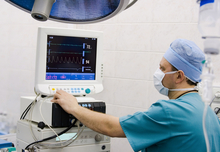Rising instability together with weak veterinary services pose a threat to world security and OIE Director General Bernard Vallat urges BWC Members to strengthen Veterinary Services as key players for animal health surveillance, response and biosafety.

Animal pathogens - Threat to horse and human health
Accidental or deliberate release of animal pathogens can have disastrous repercussions for public health, economies, and social stability because 60% of human infectious diseases originate from animals.
The Director General of the World Organization for Animal Health (OIE), Dr Bernard Vallat called for action against the rising threat that animal pathogens pose to the world’s security at the Biological Weapons Convention (BWC) Meeting of States Parties.
Accidental or deliberate release of animal pathogens can have disastrous repercussions for public health, economies, and social stability because 60% of human infectious diseases originate from animals (zoonoses) and, infectious diseases of animals also cause huge losses to agriculture. Because of these impacts, most agents that can be used for bioweapons are animal pathogens.
Effective surveillance, early detection and rapid response mechanisms for animal diseases that comply with OIE international standards are the most effective defense against any infectious animal disease outbreak, whether the cause is natural, accidental or intentional. OIE Laboratory Standards for bio risk management will also protect against accidental release of pathogens from laboratories and guard against pathogens falling into the wrong hands.
Dr Vallat said: “The best way to protect the entire world from rising bio-threats linked with animal pathogens is to ensure that all national Veterinary Services comply with OIE international standards on quality. This must be a basis for bio risk management policies.”
Unfortunately today, the quality of surveillance and response mechanisms for animal diseases varies from country to country, and in our globalized world weaknesses in one country pose a threat to all others.
Today’s movements of people, animals and consumer goods enables the rapid global spread of infectious animal diseases: SARS, avian flu, mad cow disease, and Ebola are all examples highlighting the potentially disastrous consequences that animal pathogens can pose if they are not eliminated at their primary source.
“It is a shared responsibility of governments to use all means available and apply existing recommendations that we give to prevent and control animal diseases. This will reduce the significant risks that these pathogens present,” Dr Vallat stressed. “All available channels for convincing all decision makers should be used in that objective,” he further said.
Destroying and sequestrating Rinderpest virus
In May 2011, OIE declared the global eradication of rinderpest, also known as ‘cattle plague’ because of its devastating impacts on livestock. One year after OIE’s declaration of global freedom the virus remains stored in dozens of laboratories across the world, and with disease no longer present in animals the only way a rinderpest outbreak could occur today is if virus escaped from a laboratory.
To ensure that the world remains free from rinderpest, OIE is calling on all countries to destroy remaining stocks of rinderpest virus or make sure that virus is transferred to an approved reference laboratory. The World Organization for Animal Health (OIE) and UN Food and Agriculture Organization (FAO) have also called a moratorium on research using the live rinderpest virus.
Rinderpest was arguably the first bio-weapon (used in the 13th century) and was amongst other animal pathogens to be developed for warfare during the 20th century.
